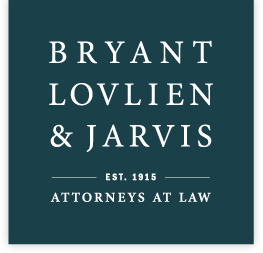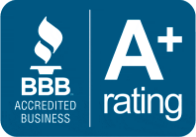By John Sorlie, Business and Estate Planning attorney
On March 27, 2020, Congress passed the Coronavirus Aid, Relief, and Economic Security Act (the “CARES Act”) into law. The law allocates a jaw-dropping $2.2 Trillion to bolster the economy after various government-imposed restrictions required many U.S. businesses to close or reduce operations to address the threats of the COVID-19 pandemic. So, what does this mean for you and your business? The CARES Act includes a small businesses program called the “Paycheck Protection Program” which provides small businesses loans and grants to help businesses cover near-term operating expenses and provide an incentive for employers to retain their employees. Below is a summary of the loan/grant program that is available through the CARES Act. I should point out that in addition to this program, the CARES Act has other significant tax benefits to businesses and other provisions that will benefit individuals that are not addressed in this post.
Forgivable SBA Loan Program
The CARES Act creates a new type of loan (the “Paycheck Protection Loan”) that small business can access through the Small Business Administration (the “SBA”). Unlike disaster relief loans that are also available through the SBA, Paycheck Protection Loans do not require that a company establish losses. Rather, it is presumed that everyone has suffered loss because of the negative impact of the COVID-19 measures. It will not be necessary to personally guaranty the Paycheck Protection Loan or provide collateral, so this program is much easier to qualify for than a traditional SBA loan. The best part of these loans is that they are potentially forgivable up to 100%.
Eligibility
So, is your business eligible? Paycheck Protection Loans are available to businesses, nonprofits, and veterans’ organizations and tribes with fewer than 500 employees (including full or part-time employees). Certain food service and accommodation businesses with more than 500 employees may also qualify if there are fewer than 500 employees at each physical location. When calculating the number of employees, you will be required to include all employees of any affiliated business.
Paycheck Protection Loans will also be made to sole proprietors, independent contractors and self-employed persons so it is not necessary to have employees to qualify.
Amount of the Loans
The loan amount available is equal to 250% of the average monthly payroll cost incurred in the one-year period before the date of the loan – up to a maximum of $10 million. Payroll is broadly defined to include salary, wages, tips, sick/family leave/PTO, severance payments, group health benefits (including insurance premiums), retirement benefits (ie. employer contributions to 401(k) plans), and state and local taxes. However, if an employee has an annual salary in excess of $100,000, that person’s wages will be capped at $100,000 for purposes of the calculation. As an example, if the payroll costs incurred by your business averaged $80,000 per month over the previous year, your business would be eligible for a loan of $200,000.
If you are a seasonable employer, the measurement period can be either (i) the 12-week period beginning February 15, 2019, or (ii) March 1, 2019 – June 30, 2019, instead of the one-year period from loan origination.
Terms of the Loan
Businesses are entitled to only one loan and it must be used for: payroll costs; continuation of group health care benefits for employees during periods of paid sick, medical or family leave, or insurance premiums; rent; utilities; and interest on outstanding debt. If not forgiven, the loan must be paid back within ten (10) years and at an interest rate of no more than 4%. However, deferrals are available for six (6) months up to a year from the date of taking the loan, so payments would not start immediately.
Loan Forgiveness
You may not have to repay the whole amount of the Paycheck Protection Loan – which effectively makes at least part of the loan a government grant rather than a repayable loan. The amount of the loan that will be forgiven is the sum of all payroll costs, mortgage interest payment, rent, and utilities incurred during the 8-week period beginning on the loan origination date. To prevent business from incurring these expenses on newly created obligations, the mortgage interest payments, rent and utilities will only be eligible for inclusion in this calculation if they were in effect before February 15, 2020.
As a means to encourage employers to retain their employees, the forgiveness of the loan will be reduced if a business lays off employees or reduced salaries/wages of its workforce. The amount of loan forgiveness will be reduced in the same proportion that the borrower’s full-time equivalent (FTE) employees decreased during the 8-week period measured against the borrower’s monthly average FTEs from either (i) February 15, 2019 – June 30, 2019, or (ii) January 1, 2020 – February 29, 2020, at the borrower’s election. Further, the forgiveness amount will be reduced dollar for dollar by any reduction in an employee’s salary beyond a 25% reduction measured as of the last full quarter before the loan origination date.
It is possible for employers that laid off workers or reduced salaries to rehire the employees or readjust the wages back to prior levels if done so before June 30, 2020.
If the Paycheck Protection Loan is forgiven, it will not be taxable income to the business.
Applying for Paycheck Protection Loans
Because SBA loans are primarily given through banks and other financial institutions – rather than directly by the SBA – to apply for a Paycheck Protection Loan you should contact your lender to determine whether they are an SBA approved lender and request an application for the Paycheck Protection Loan program. There is no cost to apply and no typical lender fees will be charged for loans under this program. It is also possible that the SBA will process these applications through their website www.SBA.gov, but as of this writing, the application was not yet available.
Emergency Advances
The CARES Act also authorizes the SBA to give quick relief to business by providing those businesses applying for Paycheck Protection Loans an advance on the loan of up to $10,000 to cover those costs that Paycheck Protection Loans can be used for. These advances must be made within three (3) days of applying for a Paycheck Protection Loan. The advance does not need to be repaid – even if the recipient’s Paycheck Protection Loan is denied. However, the amount of the advance will reduce the amount of the loan that is forgiven. These advances are available through December 31, 2020
Conclusion
Paycheck Protection Loans available through the SBA will be a significant benefit that all small business should take advantage of. If you think your business may be eligible for the Paycheck Protection Loan program, you are encouraged to contact your business lawyer at Bryant, Lovlien & Jarvis and to reference www.SBA.gov for updates on the loan application process. We look forward to helping you.
Article By John Sorlie

